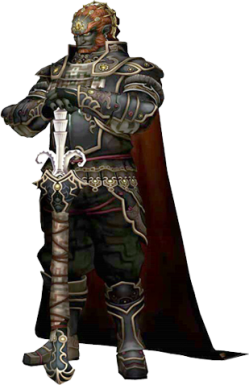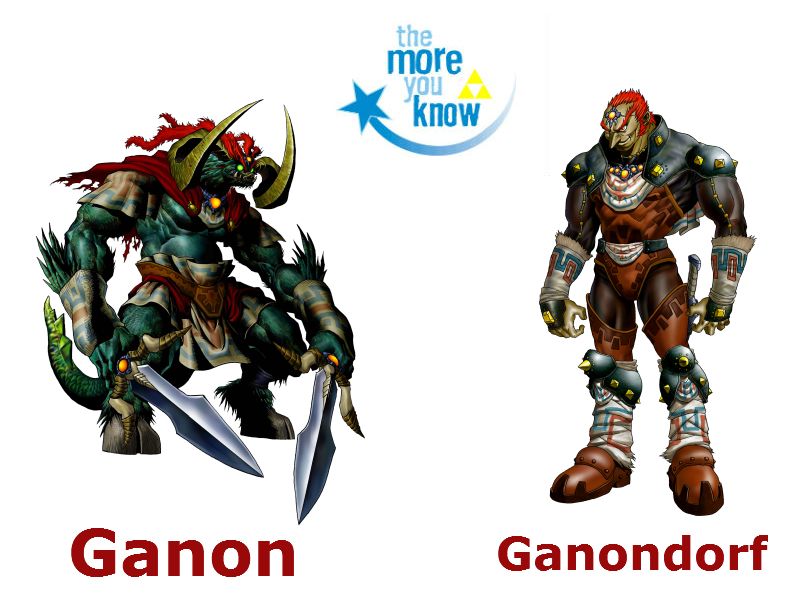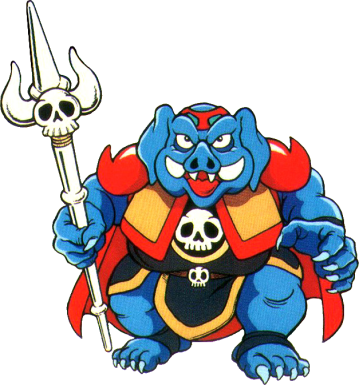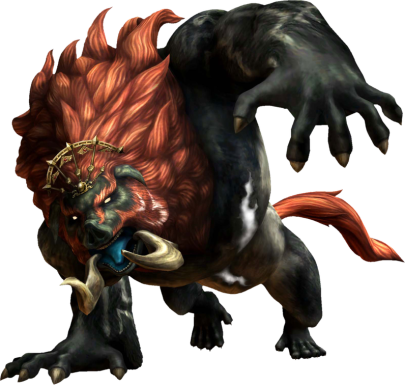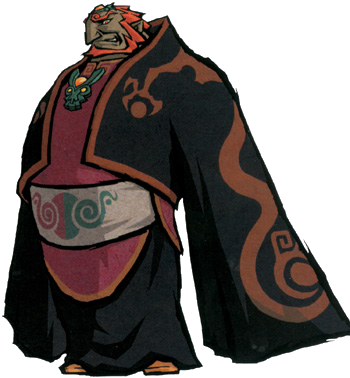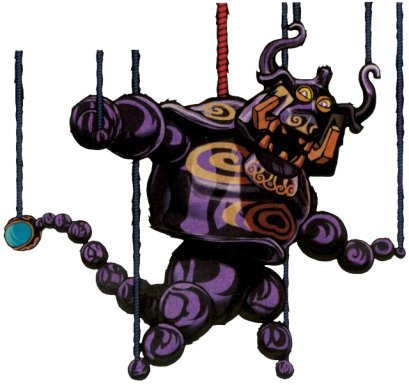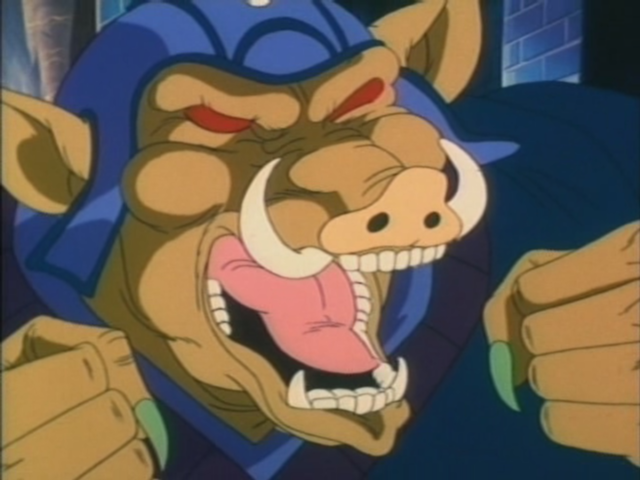You know that song “Power” by Kanye West? Well, Yeezy may not have known it at the time, but he was writing about the baddest dude in all Hyrule.
Although it’s not likely Ganondorf will make an appearance in The Legend of Zelda: Skyward Sword — after all, Ocarina of Time was an origin story of sorts for the character — he’s still the seminal villain of the series, and I fully expect parts of the story will point to the Gerudo King’s lineage.
Speaking of the Gerudo, the best way to truly understand the man who eventually becomes the King of Evil and wielder of the Triforce of Power is to take a look at his roots. While the various releases over the years have jumped through the series’ chronology, there are indisputable facts regarding Ganon’s origin.
A lesson in Ganon vs. Ganondorf
First, for those of you who may not have played any of the 8- or 16-bit games in the series, we’ll need to clarify a couple of things. Even though you fight Ganon, the boar-like monster who wields a trident at the end of each game, you know Ganondorf as the wielder of the Triforce of Power. Well, it wasn’t until The Legend of Zelda: A Link to the Past that we even knew Ganondorf existed. Until then, Nintendo referred to Link’s nemesis as Ganon.
We won’t get into specifics on timelines here — there are enough theories to fill a week’s worth of posts alone — but knowing Ganon is Ganondorf’s boar form, and the villain constantly looks like this throughout the NES and SNES titles, it should be safe to assume the first three Zelda games released are the last in the chronology. You see, an easily overlooked character in A Link to the Past mentions that the Golden Power — the Triforce — reflects what’s in a person’s heart.
In fact, much of the lore behind the Triforce in the SNES Zelda title refers to a person’s intentions and how the Power of the Gods interprets that.
The best explanation for Ganon’s consistent presence in the first three Zelda games is that by this time in the series’ history, the Evil King’s heart is so twisted he can never return to human form. At least that’s my take on it.
Funnily enough, Ganondorf yearns to rule the world while Ganon is hell-bent on destroying it whenever he’s around. Then again, I guess you’d be pretty peeved if you looked like this all the time:
Origins of a Gerudo King
The story of how Ganondorf became the King of Evil is a twisted rags-to-riches story of sorts. Legend has it that every 100 years, the Gerudo clan — an all-female race of thieves — is begat a male destined to lead them. And, of course, the lone wolf Gerudo birthed years prior to the beginning of Ocarina of Time grows up to be a power-hungry maniac. With immediate status as king of his clan, Ganondorf is free to do whatever he damn well pleases, including thieve, pillage and plunder.
But it appears there’s only one thing the King of Thieves really wants: the Triforce. So, in order to obtain the three golden triangles, Ganondorf begins a campaign to retrieve the three sacred stones by poisoning the Great Deku tree, blocking off Dodongo’s Cavern and … filling Jabu-Jabu with electrified jelly fish? To each his own, I guess.
With these relics and the Ocarina of Time, Ganondorf would be able to open the Door of Time and claim the Golden Power. He could go through all the trouble of getting all these items himself, but what’s the harm in letting a 7-year-old do the work and claiming the prize after the little fairy opens the door? In some countries you’d call that a brilliant tactic.
So Link opens the door to the Sacred Realm, gets himself sealed away for seven years and Ganondorf goes on to claim the Triforce. Who knew world domination could be so easy?
Well, you know how the story ends: Ganondorf claims Hyrule Castle as his own, invades all Hyrule and lives happily for seven years until Link comes back and just ruins everything. And I mean everything.
Now that you’ve ruined our lives we’re going to banish you. Kthxbai.
Ocarina of Time ends with Ganondorf being banished to the void between realms. The last time we see him in the game, he’s floating through nothingness and cursing those who have banished him. You can tell he’s yelling because the text is in all caps. Unless you use proper capitalization when you name your character, that is. Then he just kind of mutters it.
Ganondorf’s banishment is much more entertaining in Twilight Princess. Whereas Link, Zelda and the six sages merely cast light on Ganon in order to defeat him at the end of Ocarina of Time, the sages impale Ganondorf with a longsword and send him through an interdimensional portal in the Twilight Princess re-telling of the scene.
Don’t believe me? Check it out for yourself, then!
Once he’s served a fair sentence in the Twilight Realm, Ganondorf convinces some chump named Zant to cross back over into Hyrule, wreak some havoc and help him come back. I don’t think many video game villains have given me nearly as many chills as the Gerudo King, and Zant’s description of Ganondorf as his god is right up there on my list of all-time creepy-yet-supremely-amazing moments from the Zelda series.
Yet another epic battle between good and evil, power and courage, ensues — this time featuring a puppet Zelda and a fight on horseback through Hyrule Field — and Ganondorf finds himself with yet another sword shoved through his chest. You know what they say: “Impale me once, shame on you. Impale me twice, shame on me.”
While Ganondorf’s portrayal in Ocarina of Time and Twilight Princess is almost akin to that of a Hylian Antichrist — his primary goal is to obtain the Triforce and rule the world while all the country’s citizens suffer — his monologue at the end of his Gamecube appearance paints a fairly different picture of the character.
Thou shalt not covet thy neighbor’s wind.
During the events of The Legend of Zelda: The Wind Waker, Ganondorf is largely dormant. Once again, what he needs is for Link to pull the Master Sword out of its pedestal to regain his power. After fairy boy — known as the Hero of Winds in this installment — plays King Arthur and retrieves his blade, Ganondorf regains power and sets back to what he does best: relentlessly hunt Princess Zelda.
But why does he need her, you ask? I’ve always wondered what Bowser would possibly want with Princess Peach — no Rule 34, please — but Ganondorf has very explicit reasons for hunting Zelda. You see, the Triforce has three pieces: Power, Wisdom and Courage. In order to have the power to master the Golden Power and, by extension, the world, you’d need all three. Since Ganondorf merely owns the Triforce of Power, he’s constantly on the look for the other two pieces. Zelda owns one, Link owns the other.
So when he finally gets his hands on the young princess, Ganondorf needs only lure Link into battle in order to complete the Triforce and snag it. In Wind Waker, when Link catches up to the Evil King for that final confrontation, Ganondorf breaks into a heart-wrenching monologue that adds quite a bit of depth to his character.
How’s that for a tear-jerker? I guess it doesn’t help that he tries to murder two children right after he gives that little speech. At least Ganondorf gets what’s coming to him in the form of the Master Sword through the noggin. It's a shame, too, because a man of that many talents really should have been able to do some good for the world. I'll show you what I mean in a second.
Ganondorf, ventriloquist extraordinaire
While Ganondorf’s appearance may differ from title to title, there’s one thing that remains fairly consistent with the character. He always seems to have a puppet of some sort to do his bidding, at least for awhile. We’ve discussed how he uses Zant and Zelda in Twilight Princess, but the first time we see Ganon practice his puppetry is in A Link to the Past when he uses the wizard Agahnim as an alter ego before revealing himself in the Dark World.
Fast-forward to Ocarina of Time where Ganondorf creates a phantom of himself to do battle with Link in the Forest Temple. He uses the phantom again in Wind Waker while our young hero ventures into the Forsaken Fortress and again in Ganon’s Tower.
Another facet of Ganondorf’s modus operandi that remains consistent from game to game is the way Link fights him, at least beginning in Ocarina of Time. He’ll fire off a bolt of energy or have one of his minions do so while our hero deflects it with a sword or an empty bottle. After that segment of the fight, Ganondorf will change out of his street clothes and turn into an enormous boar-like creature — ta-da! It’s Ganon!
Even though anything from the hammers to bombs may be utilized in any given fight against Ganon, only two things have the ability to defeat him: Light or Silver arrows. In the original Legend of ZeldaI and Link to the Past, the Silver Arrows are the only thing that can stun Ganon long enough for Link to administer the final blow with the Magical and Master swords. In Ocarina of Time, the Light Arrows make their debut — probably to maintain the sequence of Fire, Ice and Light — and remain until at least Twilight Princess.
If the sages couldn’t hold him, home consoles sure as hell won’t, either
Although he’s a major player in console Zelda titles, the King of Evil is oddly missing in the majority of the series’ handheld iterations. Ganon is merely hinted at in the Oracle games if both are played and beaten, then synced; it turns out Twinrova was hunting Din and Nayru in order to resurrect their master. Other than this small mention, however, Ganondorf makes no appearance in any Game Boy Zelda title.
Four Swords and The Minish Cap tell the story of Vaati the Wind Mage and the havoc he wreaks on Hyrule, but Four Swords Adventures reveals Ganon as the orchestrator of that title’s events. He even uses Vaati as a puppet! Some people never change. Or else they quickly change and then quickly change back.
In addition to a brief mention of Ganon and a fight with the King of Evil at the end, Four Swords Adventures also gives us a bit of background on the character’s signature weapon and his connection to the Pyramid of Power from A Link to the Past.
Of course, no Zelda article would be complete without a mention of the shunned Philips CD-I series, and today will be no different. In Zelda: The Wand of Gamelon, Ganon takes Link and the king of Hyrule hostage — kind of like Donkey Kong Country 2 or Super Princess Peach — and it’s up to Zelda to rescue them from the Evil King’s clutches.
Link: Faces of Evil plays out much like any other Zelda game, except it takes place in a land called Koridai, has no connection to the Triforce and contains some absolutely horrible FMVs, one of which plays a bit like the end of The Empire Strikes Back. I’m not kidding: see for yourself.
And, of course, who can forget the Legend Zelda animated series? Ganon had no real motivation for any of the things he did beyond the fact that 1) he was the bad guy and 2) because he was the bad guy he was going to do nasty things. In fact, there wasn’t much more to it than that in the original Legend of Zelda for the NES. And he spent The Adventure of Link waiting for a resurrection that would ultimately never come. I guess you really can’t have it all.
Join us tomorrow when we wrap up our character profiles with the seminal hero of the Legend of Zelda series. No, not Sahasrala. We’re not talking about Mido, either. “It’s Dangerous to go Alone” Guy? That’s the best you’ve got? Just come back tomorrow at 7 p.m. EST, okay?

